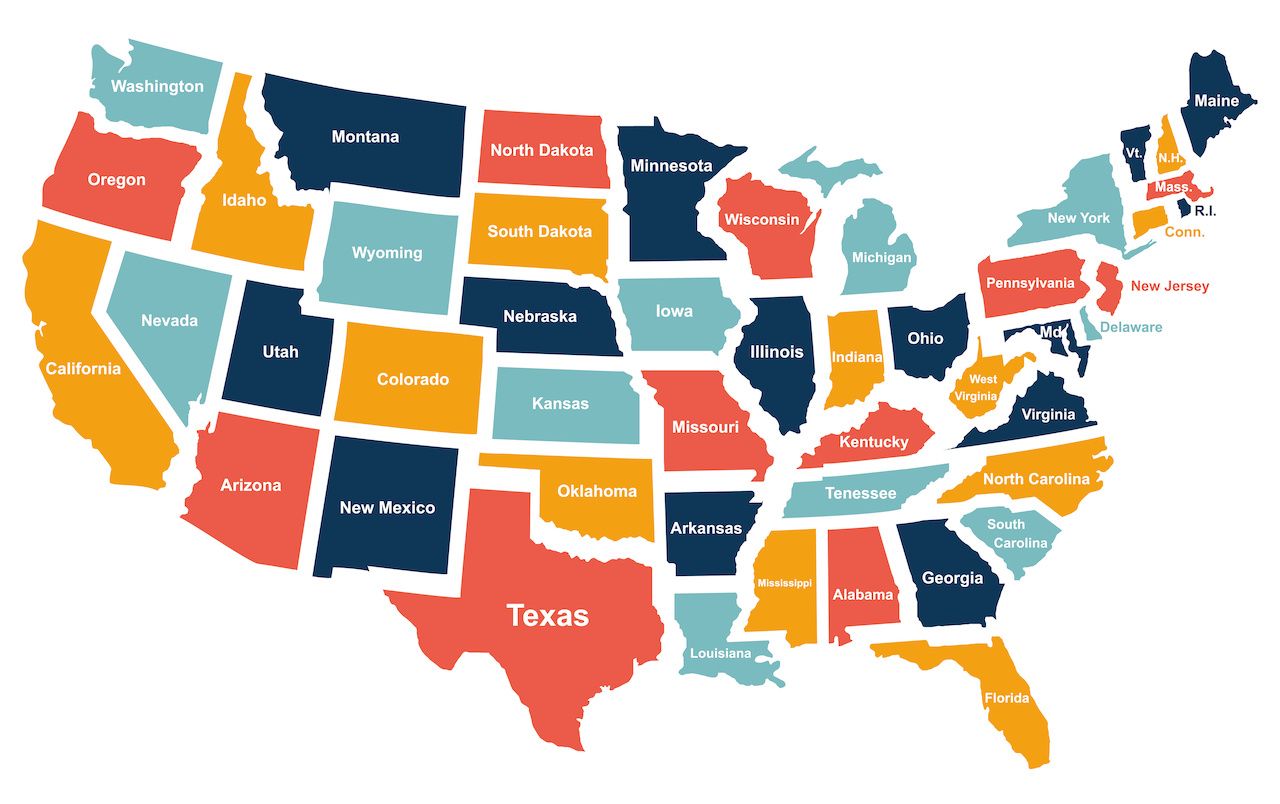Health Insurer Market Concentration High in Most Local Markets
The report from the American Medical Association evaluates health insurer market share at the metropolitan statistical area level and national level.
In 2022, Elevance Health, formerly known as Anthem, was the largest health insurer by market share in the United States based on metropolitan statistical areas (MSAs). At the national level, UnitedHealth Group had the largest market share, according to a new report on health insurance competition from the American Medical Association (AMA).
Nearly half of metropolitan statistical area-level markets had just one insurer with a market share of at least 50%.
Image credit: warmworld - stock.adobe.com

The 2023 edition of Competition in Health Insurance: A Comprehensive Study of U.S. Markets analyzed 281 MSAs and all 50 states plus the District of Columbia. The study sought to answer whether insurance markets were competition and if proposed mergers would maintain, enhance, or create market power.
“These are important questions of public policy because the use of market power harms society in both output and input markets,” the report notes.
To understand market power, the report first assessed market concentration. High concentration tends to equal low competition. The Horizontal Merger Guidelines from the U.S. Department of Justice (DOJ) and the Federal Trade Commission found 73% of MSA-level commercial markets were highly concentrated, according to the Herfindahl-Hirschman Index (HHI).
In 48% of MSA-level markets, a single insurer had market share of at least 50%, according to the report. From 2014 to 2022, the share of highly concentrated commercial markets rose from 71% to 73%. More than half (53%) of the markets that were highly concentrated in 2014 became more concentrated and 29% that were not considered highly concentrated experience an HHI increase that pushed them to be considered highly concentrated.
“High market concentration tends to lower competition among health insurers, which can harm patients by raising insurance premiums above competitive levels,” said AMA President Jesse M. Ehrenfeld, MD, MPH. “The share of markets that are highly concentrated may be far higher than reflected under current federal guidelines. The AMA supports draft federal guidelines that would lower the regulatory threshold for markets to be considered highly concentrated. To reverse the trend toward health insurance consolidation, the AMA strongly supports the proposal as the proper prescription to scrutinize and potentially limit harmful insurance mergers.”
At the national level, UnitedHealth Group had 14% of market share in 2022, which was a slight decrease from 16% in 2014. Elevance Health had 12% in 2022 compared with 13% when it was Anthem in 2014. CVS/Aetna’s share stayed static at 11% from 2014 to 2022. Cigna’s market share increased from 8% in 2014 to 10% in 2022. Finally, Kaiser rounded out the top 5 in 2022 with 7%, up from 5% and the sixth position in 2014.
For Medicare Advantage (MA) specifically, 71% of MA markets were highlight concentrated in 2022. However, this was a decrease from 87% in 2017. In 2022, 48% of Medicare beneficiaries were enrolled in an MA plan, a percentage that has been steadily increasing.
Again, UnitedHealth Group had the largest market share for MA with 28% in 2022, up from 25% in 2017, the first year MA was included in the report. Humana stayed second with 18% in both 2017 and 2022. CVS (Aetna) increased market share from 8% in 2017 to 11% in 2022. Kaiser dropped from third to fourth with market share of 6% in 2022 compared with 8% in 2017. Finally, Elevance had 6% in 2022, up from 4% in 2017.
High concentration levels, which largely occurs as a result of consolidation, can harm consumers and providers and these mergers and acquisitions can raise serious antitrust concerns.
“Conceptually, mergers and acquisitions can have beneficial and/or harmful effects on consumers,” the AMA noted in its report. “However, only the latter has been observed.” Studies have shown insurers charge higher premiums when they have market power, and there are lower premiums when more competition is present.
In 2016, DOJ intervened to block two mergers. Aetna and Humana attempted a merger before it fell apart after a ruling from the United States District Court for the District of Columbia granted a request from the DOJ to prohibit the merger. The DOJ also successfully blocked Anthem’s purchase of Cigna. However, in 2018, Aetna was acquired by CVS and Cigna purchased Express Scripts.
In an interview with Managed Healthcare Executive® in 2016, Michael Abrams, cofounder and managing partner of healthcare consulting firm Numerof and Associates, explained that consolidation among providers drives payers to merge in order to have an advantage for negotiations of reimbursement. DOJ’s problem with some of these mergers is that they reduce the choice of insurers and that “reduction in competition would lead to higher health insurance prices, reduced benefits, less innovation, and worse service,” he told Managed Healthcare Executive.
In this episode of the "Meet the Board" podcast series, Briana Contreras, Managed Healthcare Executive editor, speaks with Ateev Mehrotra, a member of the MHE editorial advisory board and a professor of healthcare policy and medicine at Harvard Medical School. Mehtrotra is also a hospitalist at the Beth Israel Deaconess Medical Center in Boston. In the discussion, Contreras gets to know Mehrotra more on a personal level and picks his brain on some of his research interests including telehealth, alternative payment models and price transparency.
Listen